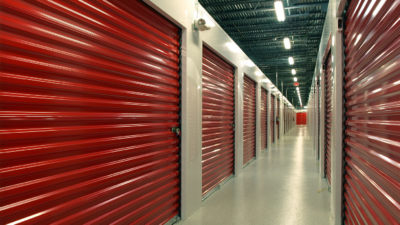In this first article of a two-part series on supply chain disruptors and their effects on retail, Gregory Healy, senior vice president and head of Colliers’ U.S. Supply Chain and Logistics Consulting team, discusses the current supply chain disruptors that are affecting retailers, and what they to do to mitigate these disruptions.
In January of 2016, the World Economic Forum released their Future of Jobs Report, which identified the beginning of the “Fourth Industrial Revolution” and noted various technological and labor market disruptors that would transform the global economy. This Fourth Industrial Revolution is an amplification of previously disconnected advances in the realms of 3D printing, nanotechnology, automation and AI, robotics and other emerging technologies.
More than three years later, this report feels like a crystal ball, as we see a technological acceleration adding disruptors and transformational pieces to virtually every industry’s respective supply chains. The retail supply chain is perhaps one of the more visible examples of how a sector can adapt to new advances. The evolution of the supply chain and its impact on retail from an industrial commercial real estate (CRE) perspective is an ongoing story.
The next chapter in that story is not the oft-repeated narrative that e-commerce is heavily replacing brick and mortar retail. Instead, we are seeing that the omnichannel fulfillment model optimizes the best delivery method — through every possible physical location asset type — and determines the most efficient customer experience. Outdated, unadaptable retailers are folding and new, versatile retail models that embrace these technologies are growing — and staying resilient as the winds of change bring new supply chain disruptors by the day. E-commerce is just one iteration of a better, faster and more efficient retail model.
A Faster Retail Supply Chain
The brands and retailers riding the wave and responding to supply chain disruptors in stride are not singularly driven by e-commerce. Instead, they are traditional retailers who have incorporated an e-commerce element as part of their strategy.
U.S. e-commerce sales rose an impressive 14.5% in Q4 2018 compared to Q4 2017, and this sector now represents 11.1% of non-auto total retail sales. The continued surge in online sales coupled with the need to deliver products to consumers quickly all while minimizing supply chain costs are forcing retailers and wholesalers into more facilities throughout the country and rapidly changing supply chain strategy. These changes will be a major contributor to continued healthy industrial real estate demand for the foreseeable future.
Walmart serves as a prime example of a big-box retailer who has responded in time to the growing consumer-centric supply chain. In 2017, they informed their suppliers that if goods were not delivered “On Time, In Full” within a two-day shipping window of the target delivery date, the supplier would be fined. They initiated an “OTIF” scorecard to track supplier commitment to program implementation.
Since then, the target-delivery windows suppliers must hit have shifted to various longer and shorter windows, but the OTIF initiative has not gone away. It’s not just late delivery that impacts the bottom line for retailers; even an early delivery can create impact for a retailer because an early arrival can take up valuable, real-dollar real estate in warehouses.
Additionally, over the last several years, Walmart has experimented with smaller-sized stores that combat the idea of the superstore. It’s expensive to have millions of SKUs on the floor at any given time, and as more consumers go online to purchase goods and groceries, big-box retailers can scale down their giant stores to save space and money.
Outsourcing Disruptions
Walmart and other successful retailers have learned there are certain constants outside of the control of supply chain and logistics specialists. Retailers can manage transportation and delivery of goods while outsourcing manufacturing and actual distribution. This model works especially well for smaller, more localized e-commerce retailers.
Third-party logistics (3PL) service providers can be hired to handle a specific part of the supply chain for a retailer. 3PLs can provide expertise and fulfillment in almost any aspect of the supply chain, from manufacturing to fulfillment to shipping. Often, these companies receive an externally-sourced product into their warehouses and then aggregate all orders through an internal portal under one platform. Sometimes a 3PL can handle just the warehousing part of the supply chain, but with vertical integration, a 3PL can also fulfill the transportation and delivery of an order.
3PLs were the largest industry to absorb industrial real estate in 2018. This disruption in the long-established retail supply chain is growing as the need for speed spreads: One warehouse can’t fulfill the needs of the entire country. The decentralization of large retailers who have, in the past, managed almost every aspect of their supply chain operations has created networks that allow for quicker, more efficient fulfillment.
Localized distribution centers create space in the market for more warehouses in more locations across the country. A larger national footprint makes e-commerce available faster for more consumers, setting the stage for more growth. Further, a reliance on 3PLs in the retail supply chain creates more competition for customers looking for e-commerce providers outside the mammoths of Amazon and Walmart, and more opportunity for additional retailers (hint: disruptors themselves) to enter a market that’s expected to increase by a whopping 55% over the next four years.
The challenge for retailers is that there are not many platforms for consumers beside the Walmarts and the Amazons of the world, except for a few niche disruptors who have carved out a place in the market.
But looking ahead, Amazon has a location challenge, and Walmart has a platform challenge. The vast majority of Amazon purchases occur online, and the cost of fulfillment has gone from 17% to 27% of their total logistics spend over the last 10 years. To effectively ship product faster and at a cheaper price point to consumers, Amazon needs additional distribution centers to combat the most expensive part of the supply chain, and thus we have seen the brand focus on efforts to acquire more locations to support their distribution platform. .
Conversely, Walmart already has the physical locations, with 90% of the U.S. population within 10 miles of the nearly 5,000 Walmart stores across the country. But e-commerce customers don’t typically think about Walmart as their go-to choice for e-commerce purchases. Instead, the collective default has been the quick two-day delivery that Amazon Prime offers. In recent years, Walmart has become more proactive in its reinvention of itself as an e-commerce retailer, notably in its acquisition of Jet.com and providing free shipping on orders of $35.00 or more without an annual membership requirement.
With its impressive physical footprint, Walmart can leverage its stores for e-commerce fulfillment, buy online with return in store purchases, or the area where they have a distinct advantage over Amazon — buy online and pick-up in store. To accommodate this model, Walmart is aggressively revamping their stores and parking lots to maximize the convenience of this service. It’s a great example of how a brick and mortar footprint can further enhance a brand’s ability to service e-commerce consumers. Moreover, it provides the customer with an opportunity to interact with a human touchpoint, something that is lacking in the Amazon e-commerce experience thus far.
Whether through the expansion of their physical footprint, or through the partnership of a 3PL, the future looks as if having a more comprehensive distribution network is the trend that retailers will have to adopt in order to mitigate the high cost of e-commerce delivery. The disruption of the brick and mortar retail model provides an opportunity for those companies that can be innovative and embrace change to leverage their physical footprint to drive a better overall physical — as well as digital — brand experience.
In part two of this article, we’ll further explore how AI and automation will continue to innovate and disrupt the current retail supply chain. The future of retail is both forward facing and client facing. By predicting consumer patterns, industrial real estate will be able to adapt to changing buying patterns and, therefore, reduce supply chain costs.
About the Author
Gregory Healy, Senior Vice President, leads the U.S. Supply Chain and Logistics Consulting team. With over 20 years of global manufacturing and supply chain experience as both a senior executive in the corporate world, as well as owning a supply chain consulting practice and a third party logistics business, Gregory has real world experience that brings a unique perspective to the Colliers team.

 Colliers Insights Team
Colliers Insights Team
 Craig Hurvitz
Craig Hurvitz
 Aaron Jodka
Aaron Jodka